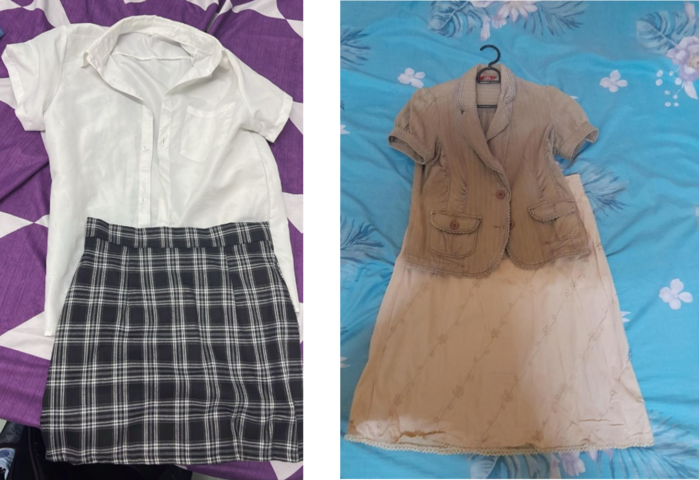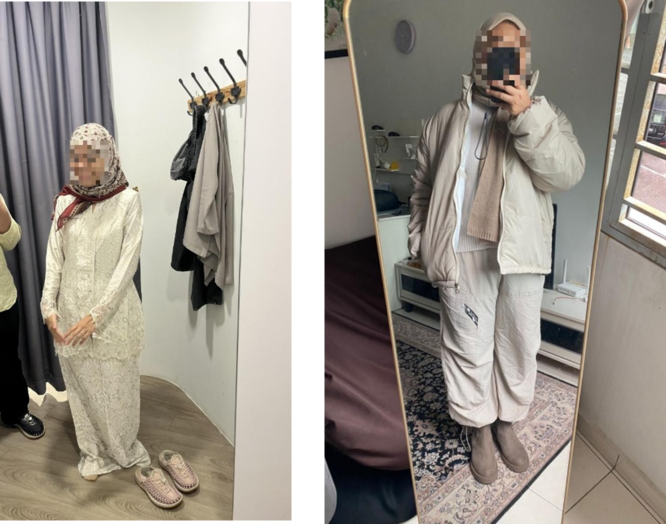Malaysian Women's Fashion: What Makes Muslim-Style Outfits Unique?
- Release date: Nov 10, 2025
- Update date: Nov 10, 2025
- 129 Views

In Malaysia, over 60%* of the population are Muslims who practice Islam, and this is reflected in their clothing culture. For example, Muslim women typically wear a cloth (veil) called a hijab (known as tudung in Malay) to cover their hair, neck, and shoulders. In Malaysia, the hijab style commonly leaves the face uncovered. Compared to Middle Eastern countries where hijabs are also worn, Malaysian hijabs are characterized by their colorful designs and high fashion appeal.
However, while wearing the hijab is a religious obligation in Malaysia, it is not legally enforced by the state. Consequently, government statistics do not collect data on hijab wearing rates or similar metrics.
This article examines the actual clothing practices of Malaysian women based on photographs of their work attire and outfits for going out, sourced from the “Consumer Life Panorama” overseas residents visual database maintained by INTAGE.
※ Data as of 2020.
Source: Share of Malaysian population in 2020, by religion (Source: Statista)
1. Work attire
First, focusing on work attire, simple clothing such as blouses and skirts, or shirts and jeans, is commonly seen in urban office settings. Many also wear a hijab (the veil worn by Muslim women) in addition to this. Color schemes tend to be subdued, with styles emphasizing cleanliness and trustworthiness being mainstream. Jackets and layered clothing were also seen, likely to cope with air-conditioned work environments. In some cases, workplace regulations encourage or mandate hijab wearing, while conversely, even women who identify as Muslim sometimes choose not to wear it.

(Left) Clean-looking white blouse and black checkered skirt
(Right) Subdued-colored jacket and skirt
Source: INTAGE Consumer Life Panorama
What is Consumer Life Panorama?
This is a website-type database that has accumulated visual data on more than 1,000 sei-katsu-sha from 18 countries around the world. The database includes many 3D models of living environments and 2D data of items owned by each sei-katsu-sha, and is useful for understanding overseas sei-katsu-sha, which is difficult to grasp using only letters and numbers.
Using visual data such as those cited in this column,
Compare the differences in the attributes of overseas consumers
To get a realistic understanding of the actual usage of each category
To understand the overall lifestyle of target consumers
etc., can be utilized as a “no-go” home visit survey.

2. Clothing for Going Out
On the other hand, clothing worn when going out tends to be more casual and expressive of individuality. Alongside Western-style outfits combining shirts and pants, traditional Muslim attire worn by women—known as the baju kurung, consisting of a loose-fitting long-sleeved blouse and long skirt—can also be seen.
In both cases, young women stood out, expressing their individuality through the colors and patterns of their hijabs. Influenced by social media, trend-conscious younger generations appear to prioritize fashionability, suggesting the hijab is evolving not merely as a religious item but as part of their style.
The hijabs in the clothing photos below can also be seen being used as accent colors or highlights in their outfits. While Western-style clothing like shirts, jeans, and dresses is by no means uncommon in Malaysia, when selling these Western-style items, it seems necessary to consider total coordination, including the hijab.

(Left) A full-length white baju kurung (traditional attire for Malay Muslim women)
with a red hijab as an accent color
(Right) An all-beige ensemble with brown shoes and hijab for accents
Source: INTAGE Consumer Life Panorama
3. Summary
Women's attire in Malaysia represents a cultural expression where religious background, personal values, and modern lifestyles intersect in complex ways. While many Muslim women wear the hijab (tudung), its style and whether it is worn at all are not uniform; they flexibly vary based on workplace environments, individual faith, and fashion sense. For work, clothing emphasizing cleanliness and trustworthiness is chosen, while styles reflecting individuality and trends were seen during outings.
The hijab serves not only as a religious item but also as a form of self-expression for modern Malaysian women, becoming a symbolic representation of their daily lives and values.
For apparel manufacturers considering entering the Malaysian market, balancing respect for religion and culture with functionality and fashionability is essential. Developing products that align with the values of local women will be key.
-

Author profile
Miki Arakaki
Since 2025, I have been engaged in providing marketing support and assistance for overseas expansion to Japanese FMCG companies in my current position.
My hobbies are language learning and photography. I am casually studying English, French, and Spanish, and recently, I've been wanting a wide-angle lens with a focal length of 24mm or less. -

Editor profile
Risa Takahama
After working in marketing research support for Japanese FMCG manufacturers (cosmetics, baby products, food and beverages, etc.) in Asia, Europe, and the U.S., from 2019, in his current position, he develops solutions for overseas marketing research for Japanese companies and conducts seminars and other outward communications.
 Global Market Surfer
Global Market Surfer CLP
CLP